February 2020
February 5, 2020
Jean-Jacques Lequeu, Visionary Architect
Lots of bizarre stuff from this creator, seen at this page, and also here.And if you're in New York City over the next couple of months, you can visit an exhibit.
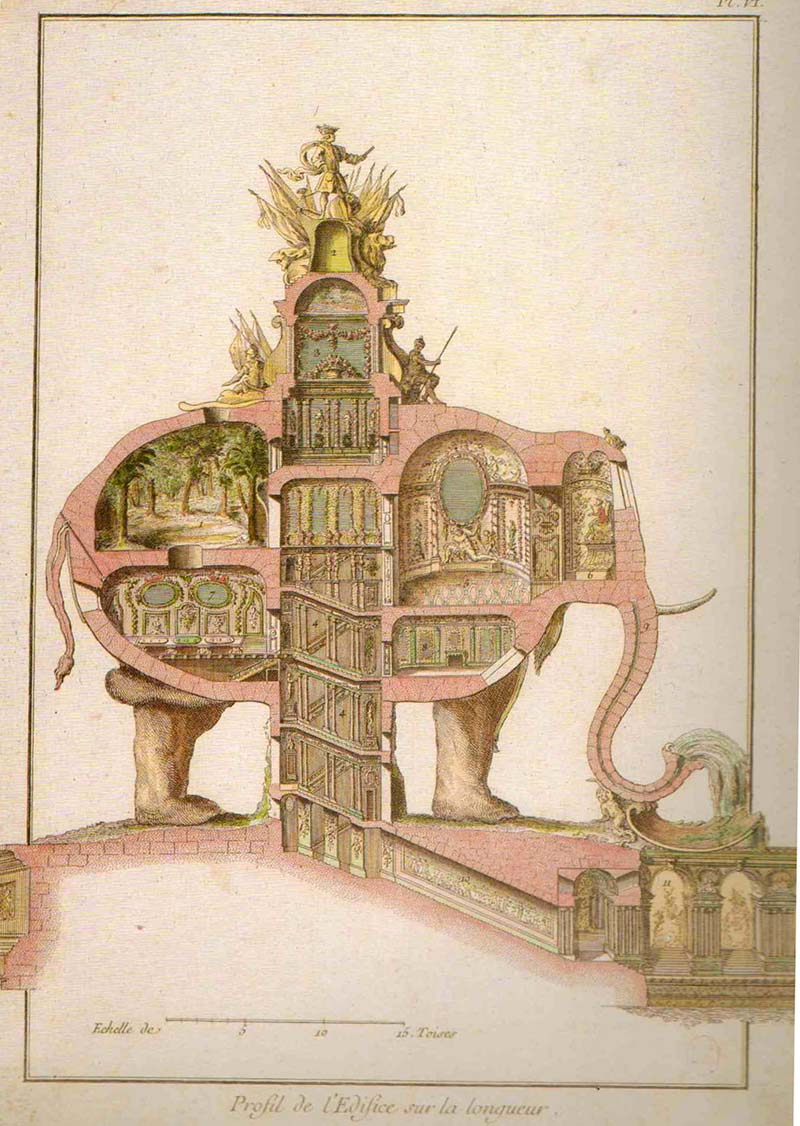
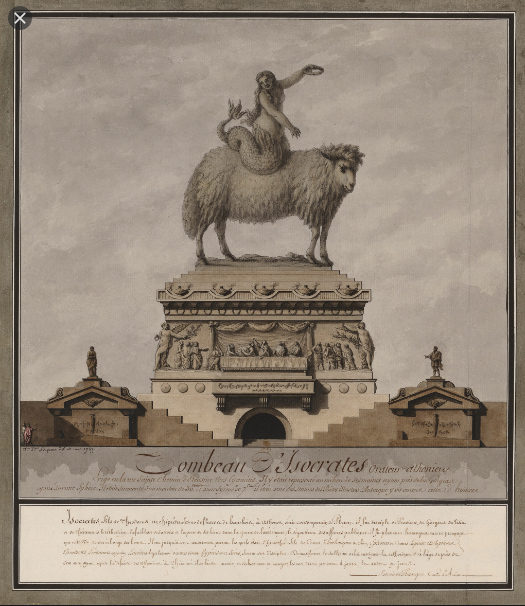
Posted By: Paul - Wed Feb 05, 2020 -
Comments (3)
Category: Architecture, Art, Eccentrics, Eighteenth Century, Nineteenth Century
February 4, 2020
The New Jersey Vegetable Monster
As defined by Leonard George in his encyclopedic work Alternative Realities: The Paranormal, the Mystic and the Transcendent in Human Experience —Loren Coleman and Bruce Hallenbeck offer some more context in their book Monsters of New Jersey:
According to George, the term originated with a sighting reported by a single severely intoxicated eyewitness, who claimed to have observed a humanoid resembling a giant stalk of broccoli. The original sighting, which allegedly occurred in the New Jersey Pine Barrens, was likely attributable to a case of delirium tremens.
The basis of the use of this expression today is that if something is so absurd and the eyewitness lacks almost any credibility, a cryptozoologist investigating this nearly completely unreliable sighting, out of no disrespect to other credible witnesses, may quietly slip the rejected case in his New Jersey Vegetable Monster file.
Unfortunately, I haven't been able to track down the original report that inspired the New Jersey Vegetable Monster. I'm not sure it was ever reported in papers.
Posted By: Alex - Tue Feb 04, 2020 -
Comments (6)
Category: Cryptozoology, Fictional Monsters
Fetal Paperweight

Source.
Posted By: Paul - Tue Feb 04, 2020 -
Comments (2)
Category: Body, Pregnancy, Business, Advertising
February 3, 2020
Frustration Room
In 1962, the Imperial Inn in Chicago opened a “frustration room.” It was a room that people could rent to vent their frustrations. They were supplied with dishes, lamps, furniture, and light bulbs, and they were invited to hurl these against the wall of the room. On the wall were pictures of policemen and politicians, among other things. The hotel manager noted, “there is a chance that someone might get carried away, and unwind so far that he needs to wind himself back up again. So as a special precaution we have a straight jacket available for anybody who goes berserk.”
Pittsburgh Press - Aug 19, 1962

Opelousas Daily World - July 15, 1962
Posted By: Alex - Mon Feb 03, 2020 -
Comments (3)
Category: Emotions, Hotels, 1960s
Mystery Illustration 92
What horrible tragedy is causing this houseguest to run away in so perilous and dramatic a manner?The answer is here.
Or after the jump.
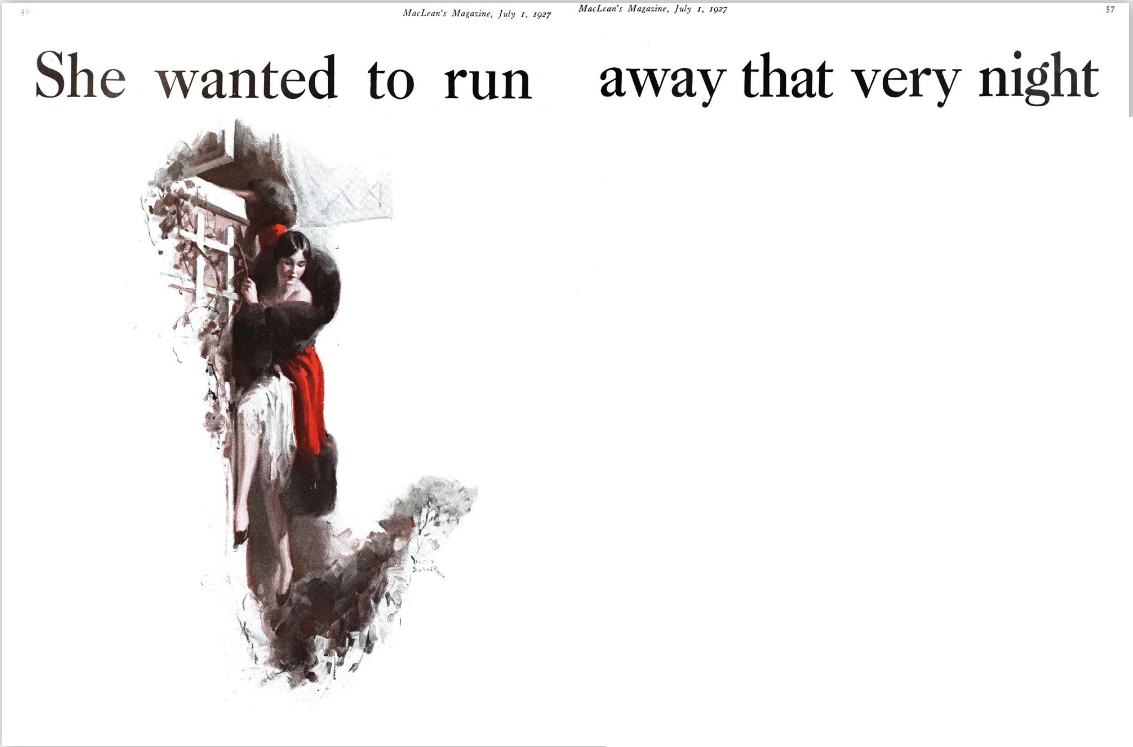
More in extended >>
Posted By: Paul - Mon Feb 03, 2020 -
Comments (2)
Category: Domestic, 1920s
February 2, 2020
Shave-O-Mat
Harry Thalheim believed that “a need has existed for a long time for a shaving emporium where people may shave cheaply and rapidly at all hours of the day and night.” So, in 1964 he patented the Shave-O-Mat (US Patent No. 3,120,886). It was a coin-operated shave-yourself establishment, open 24 hours a day.Did this address some kind of market need in the 1960s? Were there men who, in the middle of the night, really wanted to shave but couldn’t?
I'm guessing not, because, as far as I can tell, Thalheim's Shave-O-Mat never opened.
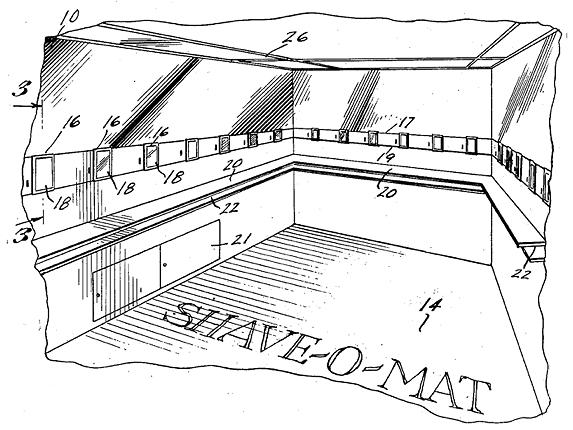
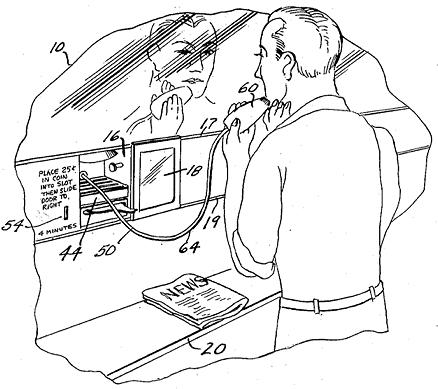
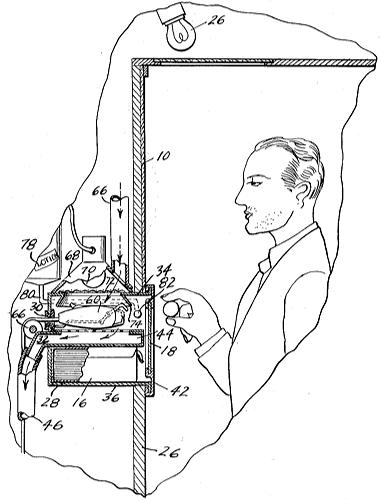
Posted By: Alex - Sun Feb 02, 2020 -
Comments (0)
Category: Inventions, Patents, 1960s, Hair and Hairstyling
Obst
Posted By: Paul - Sun Feb 02, 2020 -
Comments (1)
Category: Animals, Anthropomorphism, Food, Surrealism
February 1, 2020
Does holy water help radishes grow better?
In 1979, researcher Sandra Lenington of the University of Santa Clara set out to answer this question. Her curiosity had been sparked by learning that Canon William V. Rauscher had reported that “canna plants given holy water left over from use in religious services grew more than three times higher than canna plants which were not given holy water.” She decided to try to duplicate his observations under more rigorous conditions.
She watered one group of radishes with regular water, and a second group with holy water. After three weeks, she concluded that there was “no significant difference in the growth rates of these radish plants given holy water versus radish plants given tap water.” She published her results in the journal Psychological Reports (1979, 45, 381-382).
However, she noted that Canon Rauscher believed in the power of holy water, whereas she didn’t, and this may have affected the outcome of her study: “There are numerous documented studies showing that positive or negative belief will either benefit or adversely affect plant growth.” She suggested that future studies might try to better control for this variable.
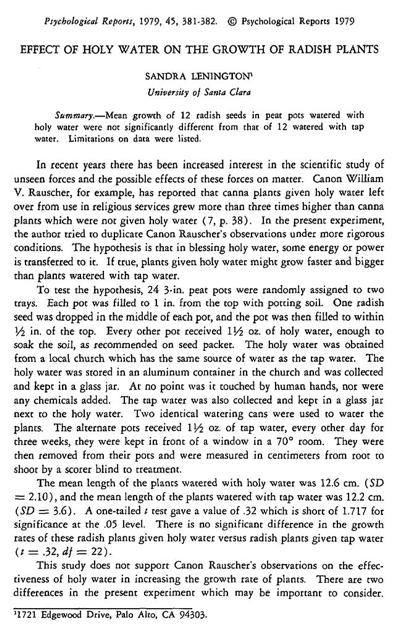
click to enlarge
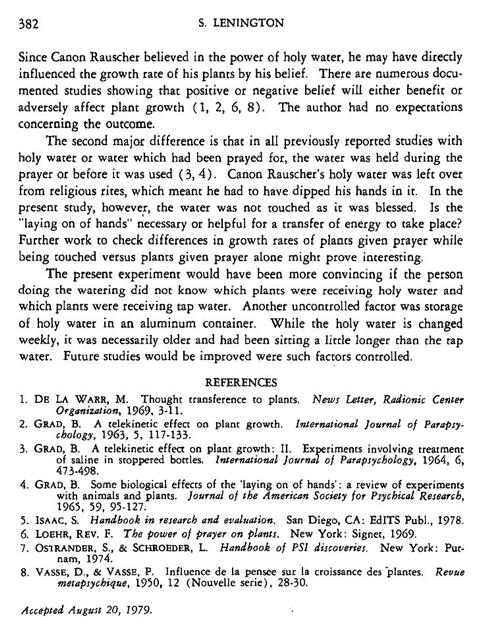
click to enlarge
Posted By: Alex - Sat Feb 01, 2020 -
Comments (3)
Category: Religion, Science, Vegetables, 1970s
Follies of the Madmen #464
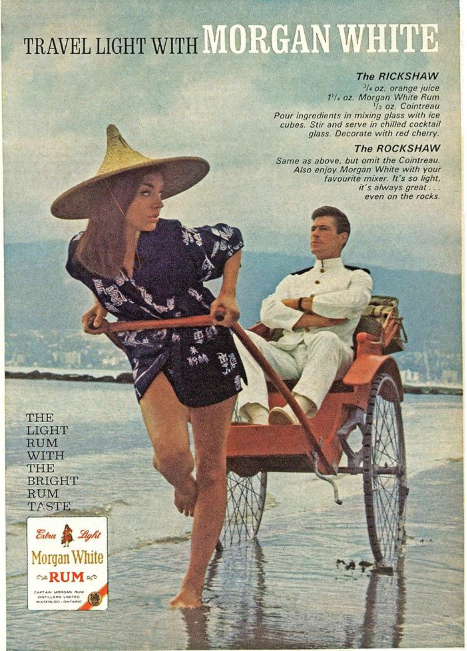
Source.
Posted By: Paul - Sat Feb 01, 2020 -
Comments (3)
Category: Bicycles and Other Human-powered Vehicles, Business, Advertising, Stereotypes and Cliches, 1950s, Men, Women, Alcohol
| Get WU Posts by Email | |
|---|---|

| Who We Are |
|---|
| Alex Boese Alex is the creator and curator of the Museum of Hoaxes. He's also the author of various weird, non-fiction books such as Elephants on Acid. Paul Di Filippo Paul has been paid to put weird ideas into fictional form for over thirty years, in his career as a noted science fiction writer. He has recently begun blogging on many curious topics with three fellow writers at The Inferior 4+1. Chuck Shepherd Chuck is the purveyor of News of the Weird, the syndicated column which for decades has set the gold-standard for reporting on oddities and the bizarre. Our banner was drawn by the legendary underground cartoonist Rick Altergott. Contact Us |

